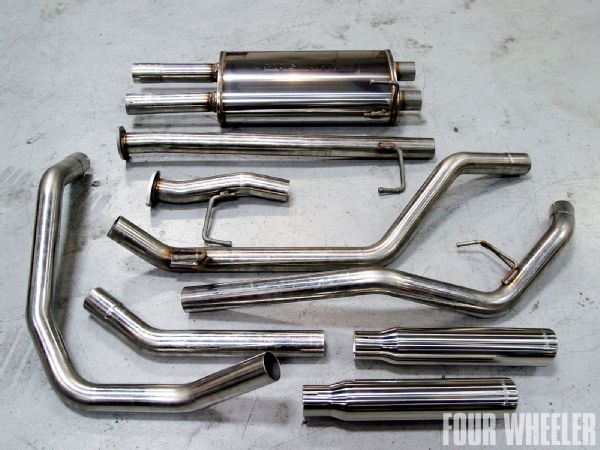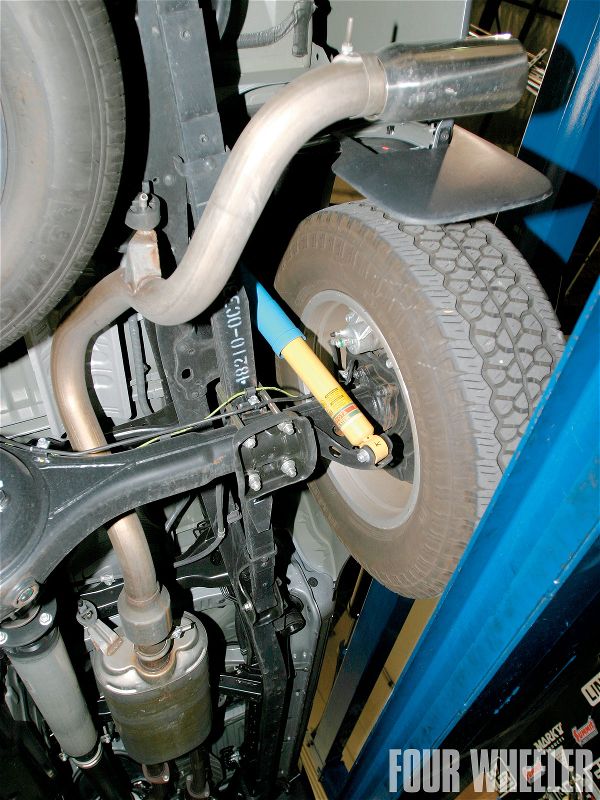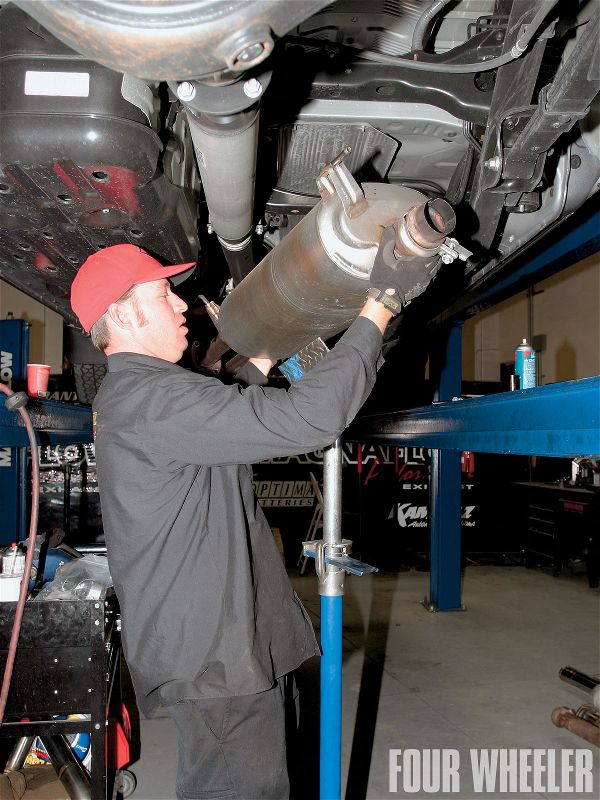
 Sean P. Holman
Contributor
Sean P. Holman
Contributor
The 5.7L iForce V-8 found under the hood of the current-generation Toyota Tundra has never been accused of being a slouch when it comes to power. In fact, the stock engine is rated at 381 horsepower and 401 lb-ft of torque, and while the engine sounds nice and refined under full throttle, we always like a little sound (not noise) with our power.

MagnaFlow, a well-known name in exhausts, has a comprehensive line of stainless steel exhaust systems that are completely bolt-on. MagnaFlow engineers its systems to give you a progressive bark under power while eliminating unwanted resonance in the passenger compartment. Because of this, these exhausts dole out nice rich sounds that don't beat you up at highway speeds.
On the Tundra, MagnaFlow offers several different exit strategies. You can choose from single rear behind-the-tire exit, same-side dual rear behind-the-tire exit, and our favorite, the split rear dual exit. Each system comes with mandrel-bent 2.5-inch-diameter stainless steel tubing. The split rear exit system also includes 3.5-inch dual double-walled polished tips. All MagnaFlow stainless steel exhaust components are manufactured to ISO9001 quality standards and include a lifetime warranty.
 With the truck securely on the rack, you can see the layout of the factory exhaust.
With the truck securely on the rack, you can see the layout of the factory exhaust.
At the heart of the Tundra system, which has an ear-pleasingly smooth sound at cruise and nice aggressive growl under load, is MagnaFlow's specially designed 22-inch-long polished muffler. Inside each muffler is an exhaust gas-scavenging Tru-X crossover pipe. MagnaFlow says that this system is what gives its exhausts maximum performance and sound control.
To get a feel for the Tundra system and the installation process, we took a stock late-model Tundra down to the MagnaFlow R&D center in Rancho Santa Margarita, California. Because of a scheduling conflict, we were unable to test our Tundra on the dyno. However, MagnaFlow provided us with a previously recorded dyno chart showing that this system's gains are 15 horsepower and 13 lb-ft of torque. You can see below how easy it is to install-something that can even be accomplished in your own driveway.
 The first step was to remove the factory exhaust, including the massive stock muffler. One can easily see why the 5.7L is so quiet in the Tundra.
PhotosView Slideshow
The first step was to remove the factory exhaust, including the massive stock muffler. One can easily see why the 5.7L is so quiet in the Tundra.
PhotosView Slideshow








